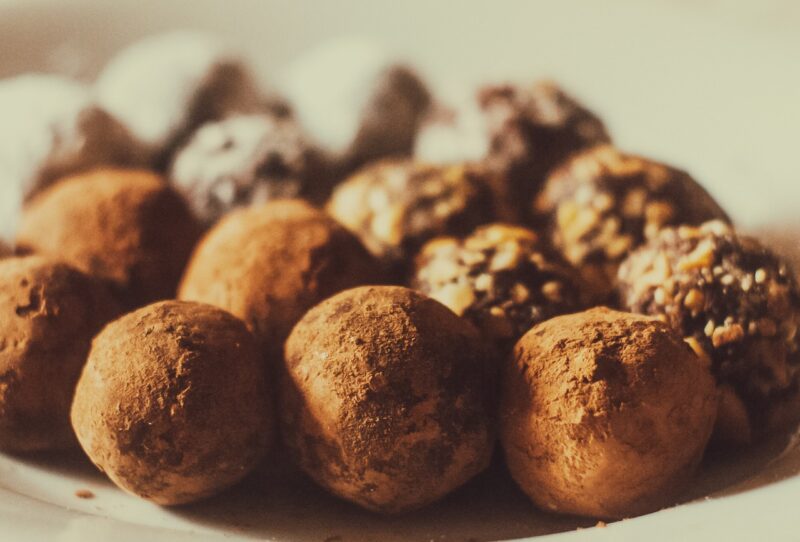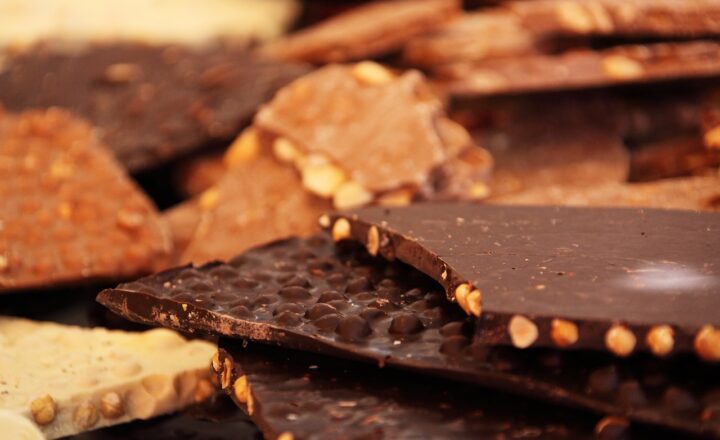The Rich History and Varieties of Chocolate Worldwide: From Truffles to Bars
November 11, 2024

Chocolate has long been a beloved treat across the globe, transcending borders, cultures, and time. From its ancient beginnings as a bitter drink in Mesoamerica to its current status as a sweet indulgence available in various forms, the journey of chocolate is as rich and complex as its flavors. This article explores the historical significance, various types, and fascinating facts about chocolate that are bound to delight both the casual consumer and the chocolate aficionado.
1. A Brief History of Chocolate
The history of chocolate dates back to ancient civilizations in Mesoamerica, where the Olmecs, Mayans, and Aztecs revered cacao beans. It was not merely a food but a sacred commodity used in religious ceremonies and as a form of currency. The Mayans, in particular, created a drink known as xocolatl, made from grinding roasted cacao beans with water, spices, and sometimes honey.
The Aztecs later adopted this practice and believed that drinking chocolate conferred wisdom and strength. Emperor Montezuma was said to consume vast quantities daily to maintain his vitality. However, it wasn’t until the Spanish conquistadors brought chocolate back to Europe in the early 16th century that it began to evolve into the sweetened delight we know today.
With the introduction of sugar and vanilla, chocolate became a fashionable drink among the European elite, eventually being served in refined dining settings throughout Europe.
2. The Evolution of Chocolate Processing
As demand for chocolate increased, methods of processing cacao improved. The 19th century marked a significant turning point, thanks to advancements in technology. In 1828, Dutch chemist Coenraad Johannes van Houten invented a hydraulic press that could separate cocoa solids from cocoa butter. This process led to the production of cocoa powder, which facilitated chocolate bars’ creation.
In 1847, Joseph Fry created the world’s first solid chocolate bar by mixing cocoa powder, sugar, and cocoa butter. In 1875, Daniel Peter and Henri Nestlé introduced milk chocolate by adding condensed milk to chocolate, leading to a revolution in flavor and texture.
Today, chocolates come in various forms, from bars to truffles, each with their unique methods of production and regional specialties.
3. Varieties of Chocolate: Understanding the Differences
Chocolate can be classified into several categories, each defining its flavor profile, texture, and sweetness level. Here are the most popular types:
- Dark Chocolate: This chocolate contains a high content of cocoa solids and sugar, but no milk solids. It is known for its rich, intense flavor and potential health benefits, including antioxidants and heart-health properties. Dark chocolate is generally categorized based on its cocoa percentage, with options ranging from bittersweet to semi-sweet.
- Milk Chocolate: This variety includes milk solids, giving it a creamier texture and sweeter taste than dark chocolate. Milk chocolate is popular in various treats and snacks, adding a familiar flavor to chocolate bars, candies, and baked goods.
- White Chocolate: Made from cocoa butter, sugar, and milk solids without any cocoa solids, white chocolate has a distinct vanilla flavor. While some consider it not true chocolate due to its lack of cocoa solids, it remains a popular and versatile ingredient in desserts.
- Ruby Chocolate: Introduced in 2017, ruby chocolate is made from special red cacao beans. Its unique berry-like flavor and pink hue have gained a significant following, offering a new and exciting option for chocolate lovers.
- Bittersweet and Semi-Sweet Chocolate: These types are primarily used in baking. Bittersweet chocolate has a higher cocoa content than semi-sweet, making it ideal for deeper chocolate flavors in recipes like brownies, cookies, and cakes.
Each chocolate variety carries its identity, defined by its ingredients and the process, making it distinctive.
4. Chocolate Around the World: Regional Specialties
As chocolate travels across borders, it adopts unique characteristics influenced by local tastes, ingredients, and traditions. Here are notable regional specialties:
- Belgium: Known for its artisanal chocolates and pralines, Belgium produces some of the finest chocolates, emphasizing quality ingredients with master chocolatiers ensuring meticulous craftsmanship.
- Switzerland: Home to some of the most renowned chocolate brands, Swiss chocolate is famous for its buttery smoothness. Swiss chocolatiers introduced the conching process, developing a method that produces silky textures in chocolate bars.
- Italy: Italy offers a range of unique chocolate treats, including gianduja—a delicious combination of chocolate and hazelnuts—or the popular Italian hot chocolate, which is thicker and richer than its counterparts worldwide.
- France: French chocolates are celebrated for their truffles and refined flavors, often incorporating fruits, spices, and natural flavors originating from local produce, resulting in elegant chocolate confections.
- Mexico: Continuing the traditions of ancient civilizations, Mexican chocolate is made with cinnamon and vanilla, often served as a hot beverage or used in mole sauce. It embodies a balance of spicy and sweet flavors, making it a cultural staple.
These regional specialties not only showcase local culture but also intricate ways that chocolate is appreciated around the world.
5. Health Benefits of Chocolate
While chocolate is often viewed as a guilty pleasure, especially dark chocolate can offer various health benefits when consumed in moderation. Some of the benefits include:
- Rich in Antioxidants: Dark chocolate contains flavonoids that help combat oxidative stress in the body, potentially lowering the risk of chronic diseases.
- Heart Health: Consuming dark chocolate can improve heart health by lowering blood pressure and improving blood flow, thanks to its ability to enhance vascular function.
- Mood Booster: Chocolate triggers the release of endorphins and serotonin in the brain, promoting relaxation and happiness—making it a delightful treat on gloomy days.
- Improved Cognitive Function: Some studies suggest that the flavonoids in dark chocolate may enhance cognitive function, supporting memory and processing speed.
Moderation is still key, as excessive consumption can lead to weight gain and negate the beneficial aspects of chocolate. Choosing varieties with higher cocoa content can maximize health benefits while indulging in this delicious treat.
Conclusion: The Lasting Appeal of Chocolate
From its ancient origins to its modern-day variations, chocolate continues to capture hearts and taste buds worldwide. It symbolizes indulgence, comfort, and celebration—perfect for gifting and sharing moments of joy.
As chocolate lovers explore new flavors, cultural contexts, and health benefits, it is evident that chocolate’s rich legacy is far from over. Whether you relish a classic bar, savor artisanal truffles, or enjoy innovative recipes, chocolate is likely to remain a beloved treat for generations to come. So, the next time you enjoy a piece of chocolate, remember its magnificent journey—from cacao trees to your taste buds.








